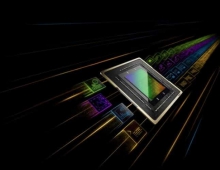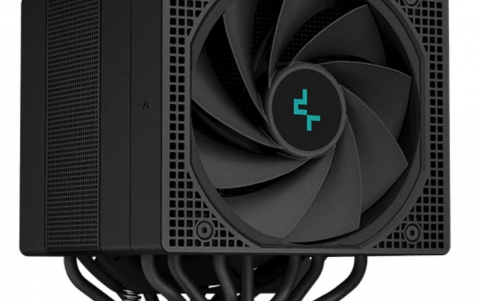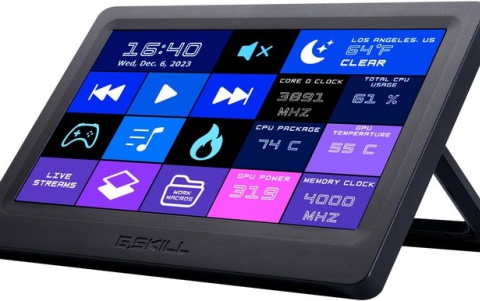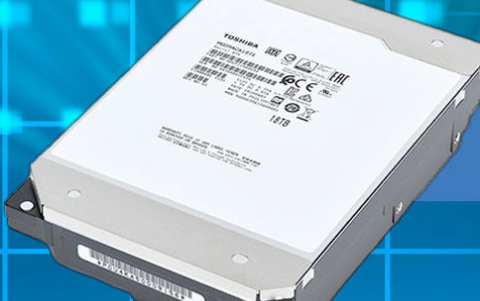
ATI, Nvidia Add HDMI Interface to Graphics Cards
ATI Technologies and NVidia are designing reference graphics cards equipped with an HDMI output interface. The secure digital interface will allow to view HD content on PC platforms and also will connect the other consumer electronics products.
The reference graphics cards from ATI and nVidia are targeted at PC OEMs and retail graphics cards makers to support the increasing demand for viewing secure HD content on PC platforms. Availability of the cards is expected in 2006.
The growing availability of high definition content, supported by the high definition optical drive standards (HD-DVD and Blu-Ray), compels the adoption of secure interfaces to view HD content on PC platforms. The HDMI interface is the de facto standard consumer electronics multimedia interface and brings the same level of quality to PC environments.
ATI and NVidia designs incorporate the PanelLink SiI 1930 transmitter, by Silicon Image. The SiI 1390 and SiI 1930 transmitters are the first integrated solutions designed to interface directly to the video and audio interfaces of PC platforms to enable secure access to high definition content. The SiI 1930 transmitter used on the new ATI and nVidia reference graphics cards integrate the recently announced HDMI 1.2 functionality to provide access to premium digital content.
"As a leading graphics provider, ATI graphics products now offer the HDMI interface to bring the ultimate multimedia experience to our customers" says Matt Skynner, Director of Desktop Discrete Graphics, of ATI. "With this feature enabled by the SiI 1930, platforms using ATI graphics will be capable of true audio & video multimedia connectivity with a variety of PC displays, digital TVs, and other CE devices."
"HDMI is quickly being recognized as one of the multimedia interfaces of choice for CE devices," states Ujesh Desai, general manager of desktop GPUs at NVIDIA. "By using the SiI 1930, NVIDIA is able to process and display full-resolution HD content on to digital displays with the highest video and audio quality."
The SiI 1930 is designed for graphics cards applications using a discrete graphics processing units (GPU), and supports TMDS input with HDMI output. It supports a wide variety of audio interfaces including Intel High Definition Audio, (Intel HD Audio) HD-Audio, SPDIF, and three channels of I2S to ensure compatibility with any PC audio hardware and offer digital audio quality of up to 8 channels at 192kHz sampling rate.
The SiI 1390 supports the Intel SVDO input for PCI Express integrated graphics chipsets with fully compliant HDMI 1.2 output supporting up to UXGA and 1080p resolutions. With the same audio interface technologies as the SiI 1930, the SiI 1390 is designed specifically for use with Intel based platforms.
The growing availability of high definition content, supported by the high definition optical drive standards (HD-DVD and Blu-Ray), compels the adoption of secure interfaces to view HD content on PC platforms. The HDMI interface is the de facto standard consumer electronics multimedia interface and brings the same level of quality to PC environments.
ATI and NVidia designs incorporate the PanelLink SiI 1930 transmitter, by Silicon Image. The SiI 1390 and SiI 1930 transmitters are the first integrated solutions designed to interface directly to the video and audio interfaces of PC platforms to enable secure access to high definition content. The SiI 1930 transmitter used on the new ATI and nVidia reference graphics cards integrate the recently announced HDMI 1.2 functionality to provide access to premium digital content.
"As a leading graphics provider, ATI graphics products now offer the HDMI interface to bring the ultimate multimedia experience to our customers" says Matt Skynner, Director of Desktop Discrete Graphics, of ATI. "With this feature enabled by the SiI 1930, platforms using ATI graphics will be capable of true audio & video multimedia connectivity with a variety of PC displays, digital TVs, and other CE devices."
"HDMI is quickly being recognized as one of the multimedia interfaces of choice for CE devices," states Ujesh Desai, general manager of desktop GPUs at NVIDIA. "By using the SiI 1930, NVIDIA is able to process and display full-resolution HD content on to digital displays with the highest video and audio quality."
The SiI 1930 is designed for graphics cards applications using a discrete graphics processing units (GPU), and supports TMDS input with HDMI output. It supports a wide variety of audio interfaces including Intel High Definition Audio, (Intel HD Audio) HD-Audio, SPDIF, and three channels of I2S to ensure compatibility with any PC audio hardware and offer digital audio quality of up to 8 channels at 192kHz sampling rate.
The SiI 1390 supports the Intel SVDO input for PCI Express integrated graphics chipsets with fully compliant HDMI 1.2 output supporting up to UXGA and 1080p resolutions. With the same audio interface technologies as the SiI 1930, the SiI 1390 is designed specifically for use with Intel based platforms.





















